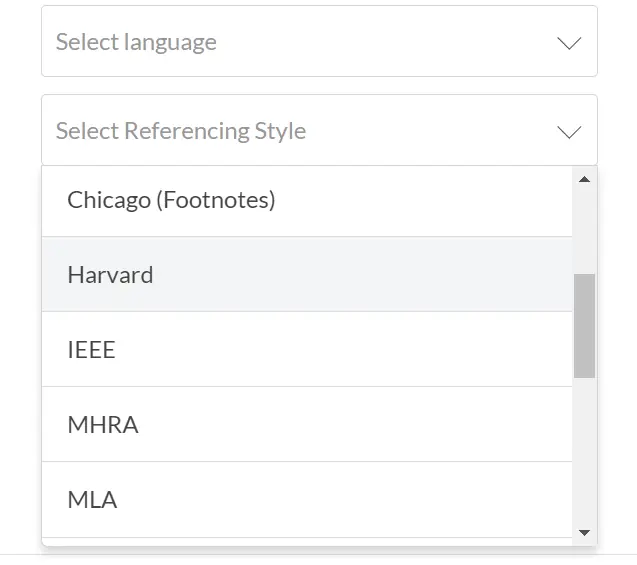Introducing Chicago Referencing
The Chicago Manual of Style (sometimes known as CMoS) is a style guide published by the University of Chicago Press. Within, you will find information on two referencing styles:
- Notes and bibliography style – Sources are cited in footnotes at the bottom of the page, with full source information given in a bibliography at the end of the document
- Author–date style – Sources are cited in brackets within the main text, with full source information given in a reference list
At Proofed, we use the notes and bibliography system from the 17th edition of CMoS as a default. This is also the version used by most universities. But we can work with the author–date version, too, so let us know if you have a preferred style.
Chicago Referencing Proofreading Services
Have you been asked to use Chicago referencing in a document? Make sure your citations are error free with our academic proofreading services. We have expert editors who can check the referencing in your documents, including both author–date and footnote citation styles.
How To Select
Chicago Referencing
To set your chosen referencing style, select ‘Chicago’ from the drop-down menu when you upload a document. This will tell us which citation style to use when we check your work.
If you would like us to use Chicago author–date referencing while we proofread your document, let us know by leaving a comment in the text box here.

Instant Quote
Footnote Citations In Chicago Referencing
In the notes and bibliography version of Chicago referencing, you cite a source by giving a superscript number in the text. For example:
The question of whether it is a ‘pizza’ or a ‘pie’ remains unanswered.¹
This points to a footnote at the bottom of the page, which is where you provide source details. The content of a footnote will depend on the source type, but it would usually look like this:
¹ Jess Levey, Understanding Illinois Cuisine (Chicago: Chicago University Press, 1998), 2–3.
The footnote above is for a book. As it is the first citation of the source, we have given full publication information. At the end of the footnote, moreover, we include a pinpoint citation to show the reader which part of the book we have cited (i.e. pages 2–3).
Citations are accompanied by an entry in a bibliography at the end of the document. This is usually similar to the first footnote citation of the source. The main differences are:
- The author’s names are inverted (surname goes first)
- The punctuation is a little different
- There is no need to give a pinpoint citation
- Each line after the first should be indented
For instance, we would list the book cited above as follows:
Levey, Jess. Understanding Illinois Cuisine. Chicago: Chicago University Press, 1998.
Chicago Bibliographies And Reference Lists
In Chicago referencing, as well as citing sources, you will need a bibliography or reference list. This is a list of every source cited in your document. The rules for this are:
- Place the bibliography on a new page at the end of your document
- Title this new page ‘Bibliography’ if you are using footnote citations, or ‘Reference List’ if you are using author–date citations
- List all sources alphabetically by author surname
- The list should be single spaced, but with a blank line after each entry
- Use a half-inch (1.27cm) hanging indent for each line after the first in each entry
- Italicise the titles of books and other standalone publications
- Place titles of essays, book chapters, and other short publications in quotation marks
- Capitalise all nouns, pronouns, verbs, adjectives, and adverbs in titles, but not conjunctions, prepositions, or articles unless they’re the first word in a title or subtitle
For more information on both versions of Chicago referencing, see our blog. You can also find Chicago’s own online citation guides here.
Author–Date Citations In Chicago Referencing
The other version of Chicago referencing uses in-text citations. This means giving the author’s name and a year of publication in brackets when you cite a source:
Gastronomical analysts disagree strongly on the definition (Levey 1998).
As shown above, citations usually go at the end of the relevant clause. However, if the author is named in the text, we would give the citation immediately afterwards:
Levey (1998) argues that the pizza–pie dichotomy is unhelpful.
Furthermore, if we were quoting a source, we would give page numbers after a comma:
This is because ‘pizza and pie are both delicious’ (Levey 1998, 43).
Here, for example, we’re quoting page 43 of the Levey source.
Finally, any source you cite should be added to a reference list. This is where you provide full publication information. Like in the footnote version of this system, the exact format here will depend on the source type. But we would list the book above as follows:
Levey, Jess. 1998. Understanding Illinois Cuisine. Chicago: Chicago University Press.
As you can see, this is similar to the format for a book in the footnote version of Chicago referencing. The only difference is the placement of the year of publication.
Referencing Styles And Systems
Our expert editors can work with a range of referencing styles, including:
We can work with other referencing styles on request, too. Just let us know which system you’re using when you upload your work, and we’ll tailor our service accordingly. For more information on legal referencing styles, such as OSCOLA and AGLC, see our dedicated legal referencing page.




